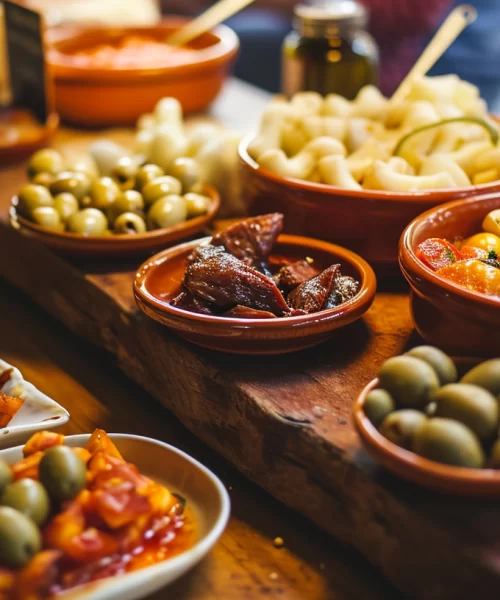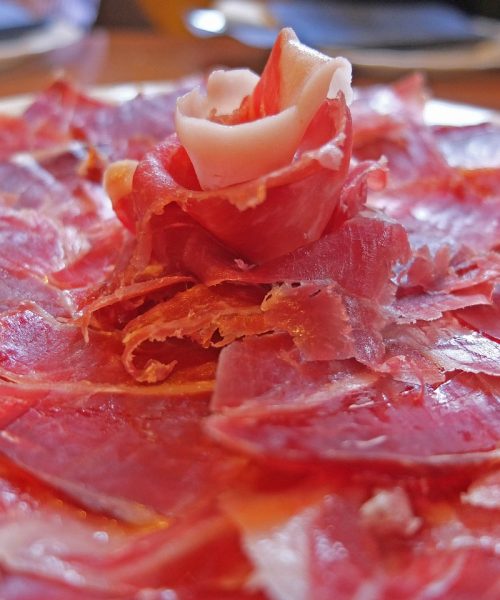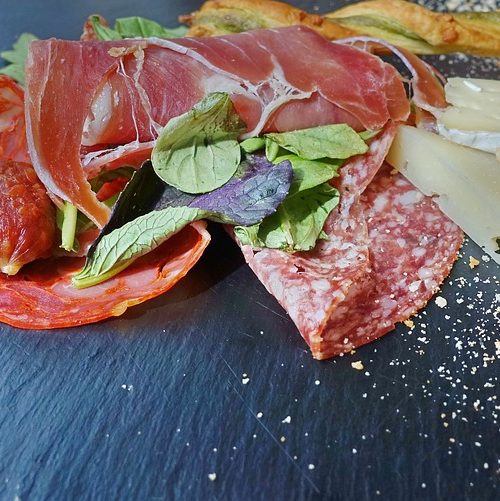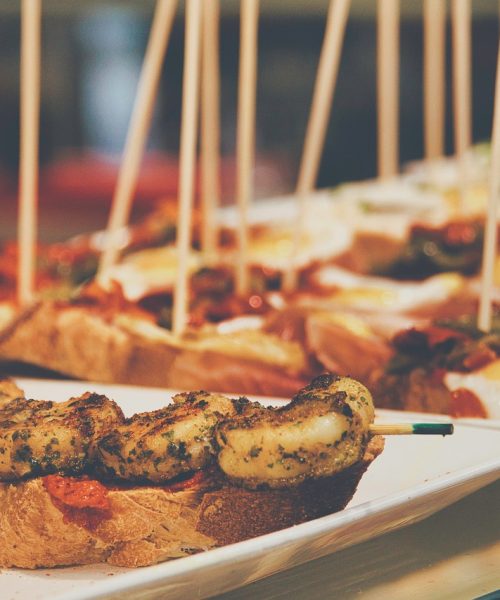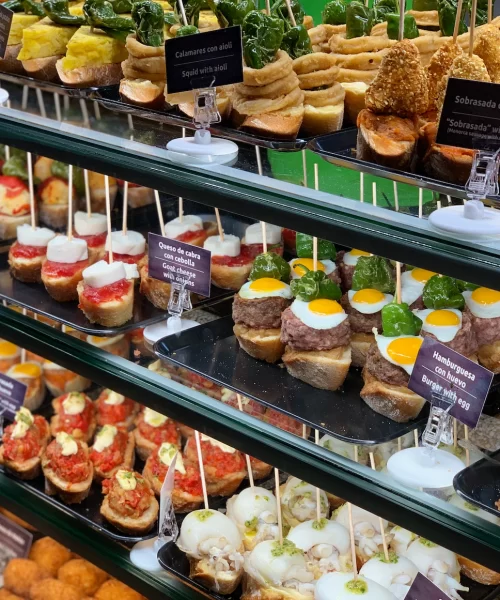It’s the question everyone asks when buying a Spanish ham, whether to eat at home, for a special, celebratory occasion or to give as a gift.
The choice of Spanish ham is so wide and the price range so wide that in many cases it becomes a complex decision, especially if it is the first ham purchase. This post is a small shopping guide to make your decision easier while you learn more about these delicious products of Spanish gastronomy.
In this shopping guide we follow the following sections:
- Type of ham: Ibérico de Bellota “Pata Negra” ham, Ibérico de Bellota ham, Ibérico ham and Serrano ham.
- Packaging format : Whole ham, boneless ham or vacuum-packed ham slices.
TYPE OF HAM
The first thing to be clear about is the type of ham you prefer or that best suits the occasion. In Spain we basically find two breeds of pigs: Duroc and Iberian. The types of ham are mainly determined by the different genetic combinations between them:
- 100% Iberian ham
- Iberian ham: 50% Iberian / 50% Duroc or 75% Iberian / 25% Duroc
- Serrano Ham: light domestic pig breed or 100% Duroc
Jamón Ibérico de Bellota “Pata Negra” – “Pata Negra” Bellota ham
The “Pata Negra” ham is the undisputed king of hams. It is one of the most valuable culinary products in the world for lovers of the excellence of selected gastronomy.
All “Pata Negra” hams must have a black label around the knuckle with a barcode that allows us to identify its origin trace and verify. These pigs are raised in freedom in the pasture, the typical “dehesas” and the basis of their diet is the acorn of the holm or cork oak.
It is a ham with a strong flavor that will last a long time palate, with a balanced and very delicate flavor that makes it really difficult to stop eating after just a few slices.
Jamón Ibérico de Bellota – Ibérico Bellota ham
These are hams of the Iberian breed crossed with Duroc in various proportions. They too enjoy free range husbandry in the dehesa and their main diet is acorns. They tend to be larger pieces than the “pata negra” because the genetics of the Duroc breed cause pigs to grow larger.
It is an excellent option as it is a top quality ham that is very close to the “pata negra” ham but at a cheaper price. These hams must always have a red label around the knuckle.
Jamón Ibérico de Cebo de Campo – Ibérico ham
These are hams of the Iberian breed crossed with Duroc in various proportions. Raised in the wild in the dehesa, the pigs feed on natural forage, herbs and roots from the field, but little or no acorns. These hams must have a green label around the knuckle.
It is the perfect ham for those looking for excellent value for money and ideal to accompany all those going out into the world of the Iberian ham for the first time.
Jamón Serrano Gran Reserva – Serrano ham “Gran Reserva”
Inside the Serrano -hams, there are also different combinations of breed and curing time of the ham. In this case we recommend the Gran Reserva Serrano ham, which, with a curing period of more than 14 months, represents the highest quality among the Serrano hams.
The Gran Reserva Serrano ham is a great ham to eat have at home and consume more often. It is the ham that Spaniards usually eat every day at home, since it has a much lower price than Iberian ham. It is a ham with a simple but delicious flavor that tastes subtly salty in just the right dosage.
PACKAGING FORMAT
Once you have decided on the type of ham, you must choose the format or packaging that best suits you among the following options:
- Whole ham
- Boneless ham
- Sliced and vacuum-packed ham
Whole ham
It is the most traditional way of buying a ham and the usual way the Spaniards have it at home. You have to keep in mind that to be able to properly cut the ham by hand, you need a ham holder and a ham knife.
It is the perfect ham format for lovers of traditions and their rituals. For many people this process of slicing is important and in the world of ham, slicing and presenting ham on a plate is an art in its own right that needs to be learned or practiced.
Boneless ham
Boneless ham is easier and faster to cut, but you must have a slicer at home or a special boneless ham holder.
One advantage is that the ham knife stays sharp longer because it doesn’t come into contact with the bone or hard skin.
The main disadvantage of boneless ham is that it dries out much quicker than whole ham. Therefore, once it has been unpacked from the vacuum bag, it should be eaten as soon as possible. Of course, pieces can be vacuum packed again in portions, and also covered with a linen cloth, which keeps it fresh longer.
Ham cut and vacuum packed
This is undoubtedly the most practical format to consume ham, as it is very versatile in any situation. You can enjoy it without any additional accessories like a carving knife and the holder. It also has the advantage of saving you a lot of space. You can have a whole ham cut with a knife and packed in envelopes of around 100g. It then takes up no more than one shelf of your fridge.
Another advantage is that you can buy exactly the amount of ham you need, from an envelope to a whole ham. After all, you can easily keep it in optimal condition for up to 6 months before opening it. A tip at the end: You should take the ham out of the packaging and leave it at room temperature. Or you can put the still vacuum-packed ham in warm water, then the fat – in the case of Ibérico ham, extremely healthy, polysaturated fatty acids – mixes with the meat – a poem!
I hope that you With all this information, you can now make a better decision about which ham to buy, in which format or in which packaging. If you have any questions, you can always contact us and we will be happy to answer them.


